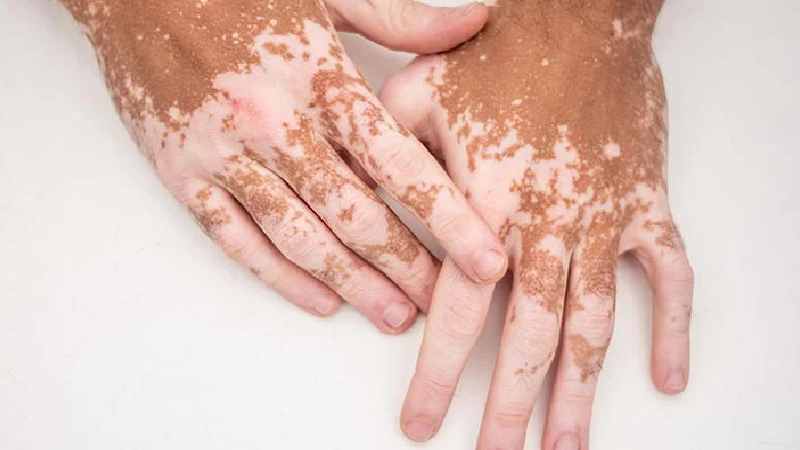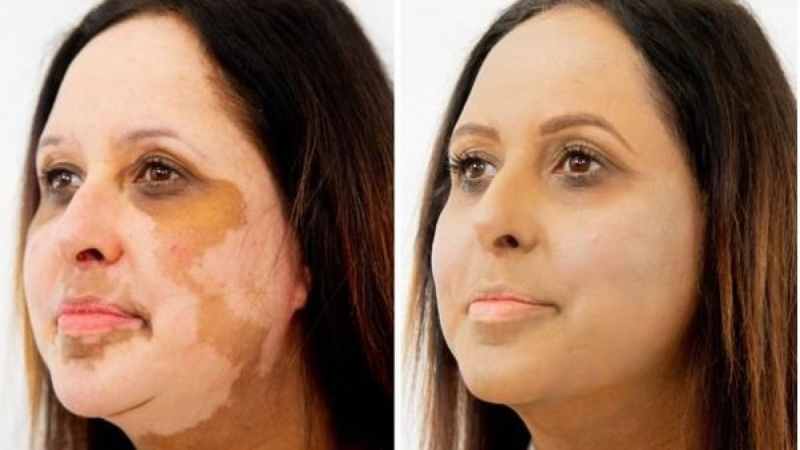Vitiligo and Treatment
Vitiligo and Treatment, On June 25, and in tribute to Michael Jackson, World Vitiligo Day remains celebrated, a disease that causes a loss of skin pigmentation in some areas of the skin.
We will address its possible causes, symptoms, and treatment options.
We will also assess what homeopathy can contribute to the treatment of this disease suffered by between 1.5 and 2% of the world population, affecting some 900,000 people in Spain.
Table of Contents
What is Vitiligo?
Vitiligo remains a disease manifested remain the appearance of depigmented areas of the skin due to the destruction or sharp decrease in melanocytes – cells. That makes melanin responsible for the skin colour – some skin regions. Producing a depigmentation that in some patients can affect almost all the skin.
Most patients present with the disease before their 40th birthday. Clinically, Vitiligo can manifest itself at any age. Though 20 and 30% of cases begin in childhood, and about half appear before the age of 20, progressing slowly by intervals of months or years in which the disease remains stable. Still, some cases can go rapidly.
In up to 20% of vitiligo cases, there is an association of severe sunburn or stress using a triggering factor for the disease.
There is no greater predisposition by sex or race, although white patients hardly show symptoms if they do not sunbathe. However, Vitiligo remains considered an autoimmune disease. It stay often associated with other diseases such as autoimmune hypothyroidism – there is a genetic component in human Vitiligo. Family history being frequent.
How is vitiligo manifested? Vitiligo symptoms

The “spots” classic Vitiligo have a colour, shape, size, and location characteristic. The most characteristic colour of Vitiligo is milky white, and when the spots converge, they adopt a rounded or oval shape with the edges often concave, like a “bite”.
Although the size of the lesions varies between half and several centimeters, they can form large depigmented areas when they tend to join together.
Most adult patients show the lesions symmetrically in the two halves of the body, with the lesions located on small or large joints, especially on the back of the hands, elbows, and knees.
Typically, it begins in the final parts of the limbs and on the face, around the orifices of the eyes, nose, mouth, and anus. Other typical locations are the lower back, the central chest area, the armpits, the breasts, and the penis.
How remain vitiligo diagnosed?
Except for the biopsy, there is no specific diagnostic test for Vitiligo.
Vitiligo and Treatment, Before diagnosing any whitish patches on the skin of Vitiligo, it is vital to make a differential diagnosis with other skin pigmentation disorders. Such as pityriasis alba, achromic nevus (white mole), albinism, Addison’s disease, hyperthyroidism, or pernicious anemia.
It is not contagious or severe and requires consistency with treatment and patience to see results.
How is Vitiligo Treated?

The conventional treatment of Vitiligo is generally unsatisfactory, and the possibility of relapse life remains.
Vitiligo and Treatment, Although there is a disparity of criteria on the part of dermatologists regarding the efficacy of vitiligo treatments, the consensus is that the aesthetic affectation and its psychological repercussion and social rejection are at least at the beginning of the process it can produce remains advised. The patient remains motivated to treat himself to better deal with his illness psychologically; since the patient experiences it badly, he stay forced to wear high sunscreen daily and limit his exposure to sunlight significantly.
In several cases, it is possible to slow down the activity and obtain a certain degree of repigmentation, which, although not complete, on many occasions is sufficiently gratifying for the patient.
For example, to point out that it was not long ago, it was a reason for exclusion to join the Armed Forces and the Civil Guard. In the case of adolescents, social exclusion is severe. It is essential in all cases too. Have an excellent high index photoprotection to avoid sunburn in the summer or areas with high insolation.
The conventional treatment of Vitiligo include:
- Topical corticosteroids
They remain commonly used in small, recent-onset lesions, especially in facial areas where it seems to go well, especially when combined with some solar radiation.
Topical treatment remains indicated in patients with Vitiligo less than 20% of the body surface, especially in children.
- Corticosteroids intravenously
Immunosuppressants such as tacrolimus and pimecrolimus
Topical or oral antioxidants.
- ·Photochemotherapy
Radiation with type A ultraviolet rays (PUVA) and drugs applied to the skin. Although it is in disuse, is helpful in limiting Vitiligo in specific applications on the affected areas. It is more beneficial. It is not adequate for depigmenting regions of the skin such as the backs of the fingers, ankles, wrists, and feet.
Vitamin D analogs
It has remained reported in recent studies that topical calcipotriol. (the most active metabolite of vitamin D) May have a beneficial effect on depigmented areas of Vitiligo, either alone. Or in combination with UV treatment.
Vitiligo Summary
Vitiligo disease is complex. Therapeutic approach with a significant psychological impact. That should not stay neglected and should remain treated. At least in the early stages of the disease. The treatment of Vitiligo is often daunting for doctors and patients; it requires perseverance and knowing that it can not be as effective in other patients. Let’s flee from the “miracle treatment”. It is convenient to avoid stress, eat a healthy diet rich in antioxidants and practice some physical activity.
